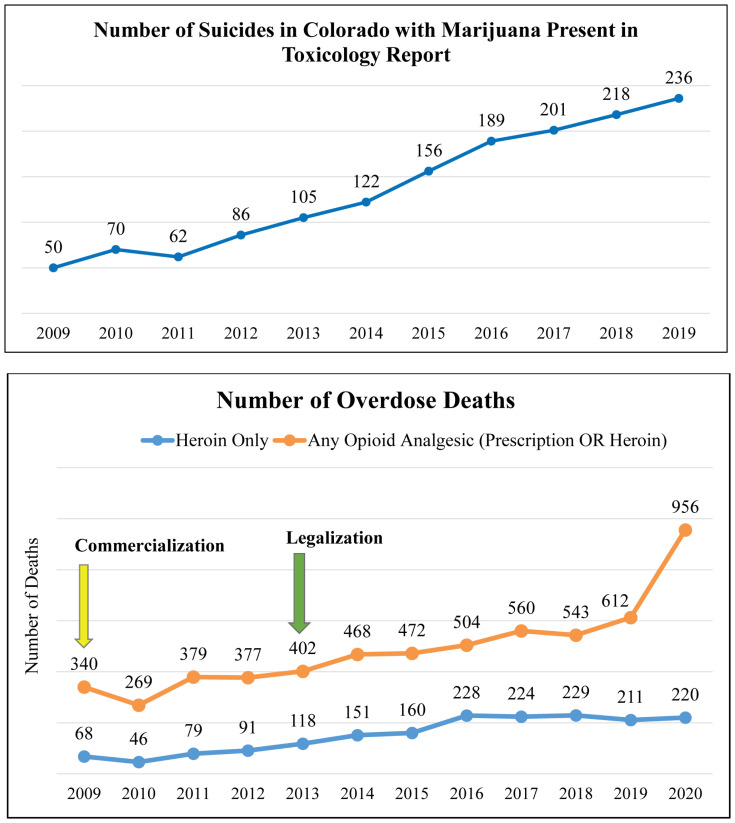
Executive Summary
The Rocky Mountain High Intensity Drug Trafficking Area (RMHIDTA) program has published annual reports every year since 2013 tracking the impact of legalizing recreational marijuana in Colorado. The purpose is to provide data and information so that policy makers and citizens can make informed decisions on the issue of marijuana legalization.1
Section I: Traffic Fatalities & Impaired Driving
Since recreational marijuana was legalized, traffic deaths where drivers tested positive for marijuana increased 138% while all Colorado traffic deaths increased 29%.
Since recreational marijuana was legalized, traffic deaths involving drivers who tested positive for marijuana more than doubled from 55 in 2013 to 131 people killed in 2020.
Since recreational marijuana was legalized, the percentage of all Colorado traffic deaths involving drivers who tested positive for marijuana increased from 11% in 2013 to 20% in 2020.
Section II: Marijuana Use
Past month marijuana use (ages 12 and older) increased 26% and is 61% higher than the national average, currently ranked 3rd in the nation.
Past month adult marijuana use (ages 18 and older) increased 20% and is 62% higher than the national average, currently ranked 3rd in the nation.
Past month college age marijuana use (ages 18–25) increased 10% and is 53% higher than the national average, currently ranked 3rd in the nation.
Past month youth marijuana use (ages 12–17) decreased 22% and is 39% higher than the national average, currently ranked 7th in the nation.
Section III: Public Health
Marijuana-only exposures increased 185% from 2013 when recreational marijuana was legalized compared to 2020.
Treatment for marijuana use for all ages decreased 34% from 2013 to 2020.
The percent of suicide incidents in which toxicology results were positive for marijuana has increased from 14% in 2013 to 29% in 2020.
Section IV: Black Market
-
RMHIDTA Colorado Drug Task Forces (10) conducted 294 investigations of black market marijuana in Colorado resulting in:
168 felony arrests
5.54 tons of marijuana seized
86,502 marijuana plants seized
21 different states the marijuana was destined
Seizures of marijuana reported to the El Paso Intelligence Center in Colorado increased 48% from an average of 174 parcels (2009–2012) when marijuana was commercialized to an average of 257 parcels (2013–2020) during the time recreational marijuana became legalized.
Section V: Societal Impact
Marijuana tax revenue represent approximately 0.98% of Colorado’s FY 2020 budget.
66% of local jurisdictions in Colorado have banned medical and recreational marijuana businesses.
Footnotes
Medical and recreational marijuana legalization is destroying the health and social fabric of Colorado. Suicide, overdoses, ER visits, hospitalizations, and domestic and street violence due to cannabis are soaring while cannabis tax revenues are an anemic 0.98% of the 2021 state budget. Tax revenues are dwarfed by the Centennial State’s cost for law enforcement, automobile and industrial accidents, and increased school crime. Missouri must keep recreational marijuana from being legalized in 2022.
References
- [accessed 11/9/2021]. https://www.rmhidta.org/strategic?pgid=khxvk038-6a0e2823-f0e2-4f73-b236-34dfc9e4952d .



